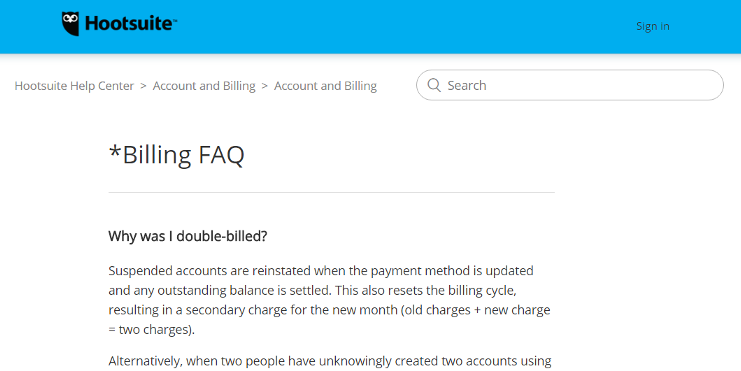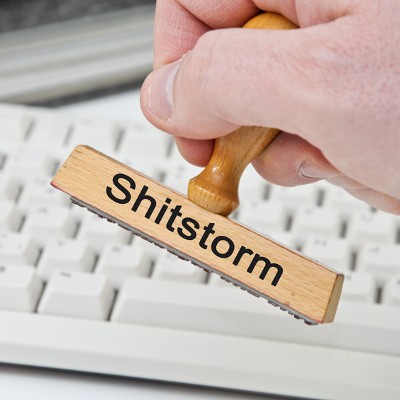JoomConnect Blog
Lessons from United Airlines’ $1.4 B (and counting) Social Media Shit Storm
After witnessing the viral social media impact of United Airlines most recent disaster involving forcefully removing a passenger from an overbooked airplane -- we figured it would be a good time to talk about what you can do to successfully manage a social media disaster. So, like they always say “Don’t be scared, be prepared!”
Although you probably will not have to worry about throwing anyone off a plane, you might encounter negative backlash from a disgruntled client or employee, so knowing how to manage a crisis like this can be very advantageous.
Some crises can be avoided, and unfortunately, some cannot, so let’s start with what you can do to help prevent crises from happening, and then we will discuss what you can do to clear the air and get back on track if you are faced with a social media crisis.
Avoiding Crisis
Don’t Be a Jerk in the First Place - I’m going to keep this one simple and to the point: if you wouldn’t treat your mom that way, don’t do it to customers. Would you drag your mom off a plane?
Don’t Be Rash - In certain situations, you might want to immediately react. This is not always the best way to handle things. Often times it is better to take a step back and think about the situation before reacting and digging yourself an even deeper hole. Think about the bigger picture, and what one “simple” issue could cost you in the long run. Many publicly traded companies like, United Airlines have learned this the hard way. Their recent passenger removal has severely damaged not only their reputation in the eye of the public, but their finances as well. United Airlines stock dropped $1.4 Billion (at the time of this writing) after their passenger removal controversy. Private companies can deal with the same issues. Sure, your crisis may not be spread worldwide, but you might risk losing your investors, clients, your business, and even more.
Ensure Customer Satisfaction - For business owners it is always important to believe in and instill in your employees the “Customer is Always Right” mantra. Your customers are the reason that you’re in business. It is your job to do as much as possible to ensure their happiness. If they still end up leaving you, make sure that you part on good terms.
A lot of times, ‘incidents’ that spiral into ‘events’ can be prevented with superior customer service. For example, I make sure that my team knows that they should do whatever they need to do to make a customer satisfied with our services. They all know that they’re authorized for up to $50 to make the clients on the happy on the spot and resolve the issue. If the customer needs a bit more attention, management will immediately assist in finding a resolution. Make sure that you are always doing what is needed to cultivate a healthy and long-lasting business relationship.
Have a Plan - Just like you recommend to your own clients that they need to have a backup and disaster recovery plan for their businesses -- you need to have a plan when it comes to anticipating crises.
The first step in devising a plan to deal with a social media crisis involves developing a variety of scenarios. Practicing these scenarios - either in real life, or just on paper, will help you to brainstorm what actions to take when the time comes.
The second step involves preparing a communication plan. In this plan, you should include a variety of messages that would address groups of your stakeholders including:
- Employees
- Investors
- Clients
- Government
- Management
- Supplies/Vendors
- Neighbors in the Community
- News Media
Of course, for every disaster you will not need to communicate with each of these groups directly, but it is a good idea to have them on your list in the event of a major crisis or disaster. You’ll also want to make sure that you have a designated individual or group of individuals responsible for relaying these messages to the intended audience.
Maintain Communication - Of course, many crises can be avoided just by ensuring open communication company-wide. You’ll want to make sure that your employees feel empowered and comfortable to report or discuss any issues or abnormalities that they see. Once reported, they can work with management to devise a plan on how to remedy them.
Open, casual, and regular meetings create a great environment for open communication. Each of our departments holds a morning huddle to keep everyone on the same page, and current on what the department is dealing with. Additionally, our department leaders meet weekly to ensure that all departments are working harmoniously.
Some crises can be avoided, but for those that can’t, or weren’t, there are a few things that you can do to get back in good standing.
Recovering from Crisis
Stick to Your Crisis Plan - As previously discussed you should have a crisis plan in place, and if you don’t you’ll be sorry come the time of a social media disaster. So as much as you “hope for the best”, you’ll want to make sure that you also “plan for the worst.” Although you of course cannot prepare for everything, having a good idea and a more general idea of what to do and who is responsible for what when the time comes, you’ll likely resolve your crisis sooner.
Create a Crisis Center - Consider a group of scenarios -- the worst possible scenarios. Management needs to discuss them and develop your stance/policies on them. Once decided, creating a Crisis FAQ or Crisis Center on your website with resources could be the difference in a major outbreak or not. Although everyone may not always agree with your policies -- having them outlined and detailed is a good idea, and backing yourself up by posting them on your website is an even better idea. Would you rather have your policies clearly visible -- or have people make assumptions and generalizations about your company with poor organization, terrible business structure, and so on, and so forth?

Monitor the Crisis - Is your company’s name popping up on social media and you have no idea? Whether it is good buzz, or negative, you’ll want to be keeping an eye on this. If you don’t have resources available to stalk your company constantly on social media, we don’t blame you. Luckily, there are lots of social media monitoring tools that can do this for you!
Consider these:
Address the Issue, Apologize, and Offer an Explanation - Ok, time to own up to it. Rip off the Band-Aid and clear the air!
- Address. Start by first addressing the issue in its entirety. Address the issue on the social media platform where it was first posted first! Then, if prudent address the issue on each of your other social media platforms. (Also do this in a timely manner. Don’t wait days, or weeks -- that will make you appear even more disorganized and crooked than already assumed.
- Apologize. Apologize for what happened, to those involved and affected.
- Explain. Offer an explanation for what happened and what you are doing to resolve the issue. Don’t react right away, take some time to clear your head, discuss with others, and formulate a response that has involved parties’ best interests in mind, and be genuine.
We hope that these terrible situations never happen to any of us, but knowing how to manage them if and when they do happen will make the process much easier.
As a word of wisdom, however, we do recommend that if a law enforcement officer asks you to do something, do it (they do have a gun after all). Don’t escalate a bad situation!
Have you dealt with a social media crisis? What helped you to resolve it? Let us know in the comments!




Comments